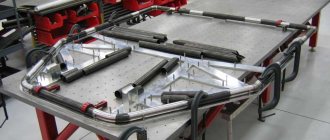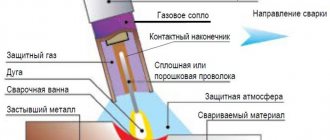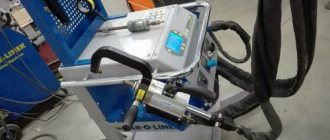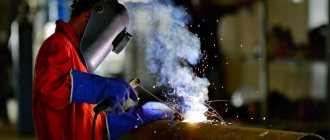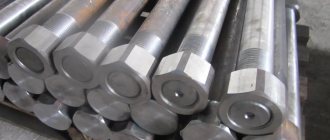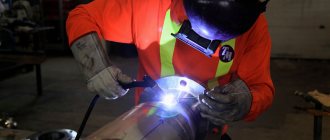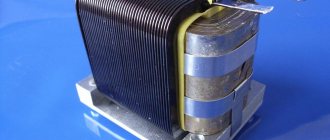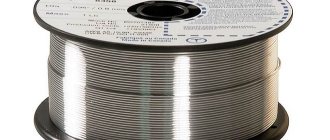Home / Consumables
Back
Reading time: 3 min
0
6842
Every welder begins his journey by purchasing a welding machine. After this, he gains experience for several years. After a certain time, the master receives orders that must be completed according to the estimate.
At this moment, the welder is faced with the task of correctly calculating the cost of all work.
A welding estimate will allow you to clearly calculate the amount of consumables that needs to be used. In addition, you can find out your income.
The customer trusts the craftsmen because they are able to clearly declare themselves and their work. This is an advantage when it comes to professional tasks.
Our article will discuss what methods of assessing welding work exist. Let's talk about all the methods: from eyeball assessment to professional calculations.
It will become known how to calculate the volume in order to receive a decent salary. We will tell you about the factors on which it may depend. You will be able to carry out simple calculations.
- Factors influencing price indicators
- Methods for assessing the welding process Visual assessment
- Mathematical formula
- Calculation formula
How is the price of welding work calculated, factors influencing the numbers
Every welder begins his journey by purchasing a welding machine.
After this, he gains experience for several years. After a certain time, the master receives orders that must be completed according to the estimate. At this moment, the welder is faced with the task of correctly calculating the cost of all work.
A welding estimate will allow you to clearly calculate the amount of consumables that needs to be used. In addition, you can find out your income.
The customer trusts the craftsmen because they are able to clearly declare themselves and their work. This is an advantage when it comes to professional tasks.
Our article will discuss what methods of assessing welding work exist. Let's talk about all the methods: from eyeball assessment to professional calculations.
It will become known how to calculate the volume in order to receive a decent salary. We will tell you about the factors on which it may depend. You will be able to carry out simple calculations.
Factors influencing price indicators
In order for the estimate to be calculated correctly, a clear understanding of the factors influencing the cost is necessary. Everything from the weather to the materials you use can affect the price of welding procedures.
But we will focus on those that really matter for welding.
The first step is to determine the scope of welding tasks. The type of welding chosen is important, as is the volume of consumables.
Arch welding using electrodes will be much cheaper than labor on a semi-automatic machine using tungsten rods and a gas structure.
There is a special formula that can be used to correctly calculate the price of your work. Using it, you will be able to calculate the correct tariff for the customer. It is worth dwelling on the methods that are relevant when assessing welding tasks.
Methods for assessing the welding process
Before performing mathematical calculations, it is necessary to define methods that differ from numerical characteristics. In addition to formulas, there are other methods that will allow you to better understand the entire welding process.
Information is needed not only by those who prepare estimates for their home. When working in production and independently calculating the price of your work, the information described in this article will be useful.
In the 21st century, there is no single classification of methods for calculating the cost of welding work. It is important to know the main ones, which are used in 9 cases out of 10.
Visual assessment
This is the simplest and at the same time biased way of calculating the cost of welding work. It is called “by eye” and is calculated in the same way.
This method is full of contradictions, but it does not require additional measuring instruments and special knowledge, unlike other methods. It is used in welding work by beginners and those craftsmen for whom welding is not the main method of earning money.
The main criteria that are taken into account in the calculations are how much time, effort and materials were spent on implementation. In 8 cases out of 10, the price depends on what the client looks like.
If the master sees that the customer has money, then the price will usually be high.
Sometimes welders use a kind of hybrid calculation that involves combining a visual estimate and a formula.
In this case, they take the price of the metal, which in 80% of cases is assessed visually. This indicator is multiplied by 2. The method is considered primitive, but it is acceptable if welding is not your main way of earning money.
Mathematical formula
In 9 cases out of 10, a special computer program is used to calculate the cost of welding work.
This method is used by welders with 15 years of practical experience or more. To accurately calculate the price, you need to understand the difficulties of welding.
Based on the experience of the craftsmen, a methodology for correct cost calculation was developed. It consists of breaking down all the components of the process into parts.
The first step is to determine how much metal and consumables for welding cost. This is necessary both for home tasks and when welding production is established at the factory.
Once you have identified all the components in numbers, you should add them. You will receive an amount that you need to write on paper or enter into the computer.
This will be our main waste. After this, determine the complexity of the work. The price of conventional arch welding will be several times less. Resistance welding is a costly process.
Determine the price according to the principle “the more complex, the more expensive.” Consider the overhead factor. We are talking about the labor intensity of the process and the time spent on welding.
Put overhead and base costs together by adding them up. This figure will be the price of welding work. Additionally, you can add profit if you did not take it into account in advance when spending overhead.
You will be able to calculate the cost correctly, even if you do not have such experience. No special knowledge is needed for this.
We offer a simple formula that will help you find out the correct price for welding work.
Calculation formula
- trab. We are talking about the time spent traveling to the place of welding work. This item is optional.
- ST. The cost of your work for 1 hour of time.
- Zd. Expenses that are aimed at purchasing gasoline. An optional item in our calculations.
- Zmat. The price of consumables or their quantity.
- Ao. Accounting for natural wear and tear of equipment. Calculated based on the model of the welding machine.
Let's sum it up
Using our article, you can find out how to find out the price of welding work and estimate its volume. Using an easy formula, you will be able to read the price of any type of welding: both arch and contact.
Are you just starting to understand welding? Then a visual assessment and a mathematical formula for calculation will be enough.
But if you weld professionally, then we advise you to combine all existing methods and select them individually. You will be able to determine how much your welding work costs. We wish you success!
Description of the cost of welding work for metal structures
When the need arises for welding work, the first question that arises is the cost of this service.
Prices for the use of welding services may vary depending on the type and volume of the order, and can be calculated on the length of the seam. Of course, you can carry out the welding process yourself, but in this case the quality is significantly reduced. Poor quality of welds is detrimental, because this can lead to instability of the structure or depressurization if we are talking about a pipeline.
Technological features of welding metal structures
Before welding, the parts are delivered to the assembly site, where further preparatory work is carried out - moving the structural elements, their temporary fastening to each other using a jig and secondary fixation of the parts.
Welding aluminum using an electrode
Welding metal structures without high-quality preliminary assembly is impossible. The durability and reliability of the entire project will directly depend on the quality of work. The slightest inaccuracy can lead to disruption of the entire structure of connections, and this is a direct failure of the engineering project.
1) How to organize the process correctly?
Based on operational time standards, about 70% is spent on assembling the structure for welding. Experienced welders have a couple of techniques in stock that can reduce the time spent on welding, but this requires a person to have experience in the niche + standard skills in working with a conductor.
Welding cast iron at home
Recommendations for assembling metal structures for welding:
- Provide for the displacement of elements, leaving a little space for this process. This should be done before using the conductor.
- The parts must be located strictly in their places according to the welding map. The position must be adjusted before the element arrives on the slipway.
- To avoid disrupting the functionality of the assembly, the elements must correspond to the design. Replacement with homemade or cheap analogues is unacceptable.
- The gaps must be optimal - no more and no less than the standards specified in the design documentation.
- Pay special attention to the corners of the assembly. If the project provides for a bevel of 45, it should be 45, not 48-50. Perpendicular guides must be at 90 degrees, otherwise the integrity of the structure will be at risk due to misalignment.
The rules specified above are applicable at the stage of receipt of metal structure elements on the staple. It is irrational to change something during manual welding. If a robotic system is involved in the work, it will not make any adjustments by default, and all the mistakes will remain in the foreman’s sight.
Temperature conditions during welding:
- -18 C is the minimum permissible temperature of the part for welding work. Preheating is allowed;
- when welding parts made of different grades of steel, a larger indicator is taken into account when calculating the heating temperature;
- +21 C is the optimal heating temperature for the part before welding.
Depending on the location of the workpieces, type of seam, technology, conditions, thickness and grade of material, there is a division into types of welded joints. There are 4 types of welding joints classified - butt, overlap, corner and T.
When welding metal structures, in 75% of cases, butt and corner joints are used. The first type is performed through direct full penetration over the entire thickness of the parts, or the lead strip method is used. The corner connection is subject to heavy loads, which is why special requirements are placed on it. They are usually prescribed in the technological documentation of the service provider company, but general recommendations can also be found on the Internet.
What is TIG welding
2) Consumption of electrodes when welding metal structures + process optimization
Any production process must accurately calculate consumables for welding - this is the basis for savings and rationalization in the distribution of finances. When working with metal structures, it is necessary to take into account the configuration specifics and the required number of electrodes, which is consumed per 1000 kilograms of MK.
A) Methods for calculating electrode consumption
If you are not involved in welding metal structures on an industrial scale, then further information will not be so relevant for you. In domestic use, welding equipment consumes up to a pack of electrodes per month, depending on the intensity of its use.
What affects the consumption of electrodes:
- Weight of surfacing along the seam. The peak value is one and a half percent of the mass of the entire part on which the work will be performed;
- seam length. Sometimes, for greater reliability, it is necessary to make 2-3 seams along one line, which accordingly increases the consumption of electrodes;
- what type of welding is used;
- standards for surfacing consumption.
The consumption of electrodes when welding metal structures can be calculated in two ways - in theory and in practice. Theoretical calculation involves the use of highly specialized formulas and tabular values of equipment + metal construction materials.
Methods for theoretical calculation of electrode consumption:
- by coefficient (reference information in the picture above);
- on the physics of electrodes and metal structures.
To practically determine the consumption of electrodes, the welder needs to carry out the same type of welding several times (5-10). To avoid inaccuracies, the external parameters of the environment and the welding angle should be as close as possible between passes.
After each test, a person must:
- Measure the length of the cinder.
- Take into account the current strength and voltage produced by the device.
- Measure the length of the weld.
You need to understand that both theoretical and practical methods cannot provide 100% accurate consumption of electrodes when welding metal structures, and therefore when purchasing materials, a person must take into account the error (defective rods) and purchase 4%-8% more from the calculated values.
B) How many electrodes are in 1 kg?
Let's assume we know the consumption of the electrodes. The second question arises - how many electrodes fit into a pack when purchased. 80% of consumables manufacturers have information on their website, but what to do if your wholesale supplier is one of the 20% who do not calculate this in advance.
What affects the number of rods in 1 kg:
- electrode radius;
- Dina;
- specific gravity of the electrode;
- how thick and airtight the packaging is.
The higher the values specified above for electrode rods, the smaller their number will be located in the package. Some manufacturers may take a workaround and sell the material without packaging (by weight). In such cases, there is less work for the buyer.
GOST - 94 466 - 75 also serves as an assistant in resolving the issue. It indicates the maximum permissible values for various sections of electrodes in relation to their number of packs and the weight of each rod.
Types of welding work
The methodology for carrying out welding work is a very important point that should be taken into account when ordering a service. In particular, welding differs from each other in the degree of complexity and the use of different types of energy. Each type of welding has its own nuances, advantages in quality and application at different sites. For example, we can highlight arc welding, which is most often used in production. Gas welding is usually used on private projects.
Welding using a semi-automatic machine
When working with metals using arc welding, special electrodes are used. This is a material whose structure consists of wire coated with flux. During welding, the flux melts and forms a gas shell in the area of the straightened metal, which ultimately prevents oxidation of the metal.
In addition, special additives in the flux help strengthen the weld. A similar principle of welding work is used in the semi-automatic process. Semi-automatic welding machine is distinguished primarily by the use of a special wire, which is automatically fed into the work area. The wire is automatically unwound from the drum , and unlike the electrode, it is not coated with flux. Seams are protected by introducing any inert gas. Carbon dioxide is most often used, which protects the seams from oxidation. The use of this type of welding significantly improves quality, and as a result, the seams do not require mechanical cleaning.
Cost of welding work.
- The arc method costs 15–25 rubles per 1 cm of seam.
- The semi-automatic machine costs 30–50 rubles per 1 cm of seam.
Spot and multi-spot welding
Spot welding is extremely rarely used in private construction due to its high cost.
Naturally, such prices for welding metal structures are determined by the high quality and complexity of the work. Unlike the arc method, spot welding uses several electrodes at once, which can melt and bond metal in turn or simultaneously. The simultaneous creation of seams throughout the entire welding area is called multi-point welding.
The only difference here is that in the point model, the current is gradually supplied to one or two electrodes. In a multi-spot welding process , as a rule, current is supplied via an energy distributor to all electrodes at once. Placing seams on metal structures in this way requires special equipment and a highly qualified specialist.
Spot welding combines two processes at once.
Almost simultaneously, the metal melts and the pressure increases. As the pressure increases, the rigidity of the metal is overcome , due to which the required deformation is obtained at all the necessary points for creating the seam.
Using this process allows you to obtain high-quality and reliable seams, which ultimately do not even require mechanical stripping. The cost of spot welding works ranges from 40 to 50 rubles. When using a multi-point process, prices are doubled.
Cost of welding work
Prices for welding services vary depending on the reputation of the company or the qualifications of the specialist.
Basically, the cost of welding work on metal structures is calculated depending on the complexity and volume of the order. The price is usually taken per linear meter or per seam. In addition, sometimes we are talking about welding pipes or gratings, but not many companies have specialists to take on such complex tasks. On average, modern prices for such work are:
- 100–600 rubles for welding one joint on pipes;
- 25–60 rubles when using argon arc welding.
Cost per linear meter of product:
- 2800–3800 rubles blown grate;
- 4400–5500 rubles swing lattice;
- 2000–3000 rubles simple grille;
- 8000–10000 rubles decorative grille.
When ordering welding services to create decorative items, furniture, store shelves, not only the complexity of the work is taken into account, but also the order itself. Some clients may provide their own design sketches. Typically, when manufacturing standard structures, the cost per linear meter is 1800–2500 rubles .
If you have to create a metal structure according to a sketch, the cost increases to 15,000–30,000 rubles per linear meter. The cost of welding work for the manufacture of one linear meter of fencing:
- 1500–2500 rubles for simple fencing;
- 1300–2000 rubles for portable fencing;
- 3000–5000 rubles for decorative fencing.
Using welding services for metal structures in production is comparatively cheaper.
Here, as a rule, all work is done in bulk and the cost is calculated in tons of finished products . Wholesale work during the welding process ultimately reduces prices compared to the private market for providing services.
The cost of welding work for the main types of rolled metal:
- 400–800 rubles per ton of channel;
- 20,000–50,000 rubles per ton of pipes;
- 20,000–35,000 per ton of steel sheets;
- 20,000–35,000 per ton of corners.
How to calculate the cost of welding services
For many specialists, purchasing a welding machine and eventually learning welding at a professional level is not the least difficulty. And subsequently, many come to provide welding services or simply do “hack jobs” in addition to their main job. And here many people are faced with the question of how to calculate the cost of welding work, adhere to production and factory pricing standards, or determine it “by eye.” In this article I will provide a formula and a few tips that may be useful to you and will help you initially decide on prices for types of services related to the welding process.
Main pricing factors
Let me start with the fact that you can determine a number of factors that will directly affect the cost of a product or service created by the hands of a welder, namely:
- Scope of work carried out
- Complexity of work
- Type of welding
- Type of consumables required during the welding process
And these are not all the points, but I still want to convey a simpler price formation formula that almost every welder can use, even if he has never dealt with pricing and is far from humanitarian economics.
twork – time spent on work
td – time spent on the road
ST – welder hourly rate
Zd – travel costs (fuel)
Zmat – costs of consumables
АО – equipment depreciation
Thus, the cost of work = (time spent on work + time spent traveling to the client) * specialist’s working rate + (travel costs + material costs + equipment depreciation)
I gave the simplest formula for calculating the cost of services, from which it will be somewhat problematic to express the exact cost of a centimeter of a weld or a welded pipe joint, the standards that organizations and services often use. But, using it to calculate the cost of not very complex simple work is quite practical.
How to gain a foothold in the welding services market
You need to advertise yourself! You are a welder, your clients should know about your capabilities. Advertise yourself wherever possible, on websites on the Internet, in local advertising newspapers, on fences, poles, trees. Your advertising should be everywhere where people go. A friend of mine is engaged in digging wells, he writes his advertisements with a marker on plastic, hangs them on trees in dacha cooperatives, near bus stops in private sectors. He says that this type of advertising works fine until someone removes it. A few tips that will help you gain a foothold in the welding services market in your region and attract more clients:
- Always be aware of welding service prices in your local market. Start using the Avito website. You should offer your welding services on the Avito website, on the From Hand to Hand website, as well as in advertising newspapers in your city. Look at prices from advertisements on the Internet, ask familiar welders and clients. This will help you create your own hourly rate, depending on your professional skills.
- If there is quite a large demand for your services, and there is not enough time for all clients, you should think about an assistant or raise your prices. It is more priority to provide a discount to the client so that he will contact you next time than to work for a low fee.
- Sometimes, to simplify the assessment of the cost of work, you can calculate the approximate consumption of materials for the work and ask the client to purchase them himself. Thus, the cost of the final product of work for the client will become more clear.
- You can increase the hourly rate by 1.5-3 times when performing welding work in cramped conditions, at heights, in trenches, pits, etc., etc.
How to calculate the cost of welding work
After purchasing a welding machine from an amateur, sooner or later the first orders from outside will appear. Enough for those you know to know that welding seams have begun to be of acceptable quality, the first people willing to use a welder will appear. And here it becomes necessary to calculate the cost of welding work. The best option is to draw up an estimate. It allows you to accurately take into account all cost items and inspires confidence among customers, since all calculations will be transparent.
There are many ways to determine the cost of services for welding work: from determining the approximate cost by analogy with the previously completed volume to precise verified calculations. Below we discuss all the methods available to the welder, including drawing up an estimate for welding work. The material will help you correctly determine the final cost and avoid unpleasant mistakes.
- What is the cost formed from?
- How to evaluate a welder’s work Visual assessment
- Mathematical calculation
- Formula for calculation
What is the cost formed from?
To competently draw up an estimate, you will need to understand the basic principles of its formation, that is, know what factors influence pricing. There are a large number of objective circumstances that have a direct or indirect impact on the formation of the final cost of services. But at first it is enough to know the basic principles.
The main factor is the volume of work. This is logical, since the longer it takes to complete a task, the higher the cost of the services provided. In addition to volumetric indicators, it is necessary to take into account qualitative ones - the complexity of the work, the type of welding, the quantity and types of consumables that need to be used during the work process. For example, electric arc welding will be much cheaper than semi-automatic welding using a tungsten rod in an inert environment. Below is a formula that will make it much easier to determine the cost of welding services for metal workpieces. It is great for determining the tariff for a specific type of work or the cost of the entire volume. But first you need to familiarize yourself with generally accepted valuation methods.
How to evaluate a welder's work
Before proceeding directly to the calculations, you need to familiarize yourself with the options for estimating the cost of work. It is important to understand that in addition to the mathematical approach, there are other ways to determine cost. This knowledge is in demand among different categories of specialists: both among home craftsmen and among production site managers who independently determine the cost of services.
There is no single register of all existing methods. But it is worth paying attention to the main ones, which are most often in demand in practice.
Visual assessment
The easiest and fastest way to determine the cost of work is “by eye”. This is a relative method and the result largely depends on the master, or more precisely on his vision of the process. But it is the simplest and does not require any special knowledge other than understanding how to implement the task. Most often, this method is used by specialists to calculate the cost of manufacturing simple structures.
In this case, the specialist takes into account the cost of materials and evaluates his contribution to the project. The final cost depends to some extent on the customer's solvency. If he looks like a wealthy person, then there is a high probability that the price will be somewhat inflated.
Another option is a symbiosis of visual assessment and calculation. Its principle is simple: the cost of work is equal to the cost of materials. The welder roughly estimates the quantity and price of metal needed for the job. Then the result is multiplied by 2, and the amount is presented to the customer as final for the finished structure. It is quite a primitive method, but at the same time in demand among different categories of specialists.
Mathematical calculation
The most common way to determine cost. Based on the use of a special formula. Most often, the estimate is calculated by a PC operator who uses a specially developed algorithm (program).
A fairly simple and very accurate method that gives a specialist the opportunity to independently determine the price for his services deserves special attention. It consists of breaking the process down into many simple steps that are easy to evaluate. At the very beginning, it is necessary to determine the amount of costs for materials, including consumables. Let these be the main expenses.
The result obtained is summed up and recorded. After this, the complexity of the welding work is determined and the price of the services is determined. The time spent on completing the work should also be taken into account. All this can be called overhead costs.
Now it's time to add up the basic and overhead costs to determine the final cost of the project. In some cases, it is advisable to add the planned profit to the obtained result, as is done in enterprises.
Formula for calculation
In this formula:
- twork – time spent on work;
- td – indicates the amount of time spent on the road to the object (place of work) and back (the item is not mandatory for calculation);
- ST – rate per hour of work;
- Zmat – the amount spent on consumables;
- Zd - the cost of gasoline or other fuel, a ticket or carrier services spent on arriving at the place of work (facility) - is not a mandatory item for calculation;
- Ао – the amount of expenses associated with depreciation (wear and tear) of the welding machine and auxiliary equipment (equipment).
This calculation method allows you to fairly accurately calculate the cost of the finished metal structure. It can be used both in production and by amateur welders. However, it should be borne in mind that this is not the most detailed and accurate calculation formula. For technologically complex operations, there are more complex calculation algorithms that take into account all the nuances and all types of costs.
Conclusion
Using the above calculation methods, you can determine the cost of most technological operations for welding metals. It is advisable for novice specialists to use the formula given in the article or the visual assessment method, provided that similar work has already been performed previously. Well, for those who have been providing welding services for a long period of time, it is best to combine several calculation options so that the final value is as weighted as possible.
Prices for welding work
Every welder should know the approximate prices for performing a particular welding job. Of course, we won’t dare to give exact figures, but still, if we take the average cost of work, then we can get approximate figures.
In many ways, everything here depends on the qualifications of the welder, as well as on the complexity of the welding work. Some companies offer a fixed price for labor, while some work according to a different scheme. Be that as it may, below is a price list for welding work in Moscow and the region in 2022.
Price list for welding work
offers the services of highly qualified welders. We carry out welding work of any complexity; our workers have the necessary qualifications and permission to work at heights. We have at our disposal only modern high-precision equipment, as well as additional devices that help carry out work in any conditions. The price for welding work is fixed, and the price list for welding work is current for 2022 in Moscow and the Moscow region!
Advantages of contacting TekhStroyKomplekt
- We carry out all types of welding: argon, electric, gas welding.
- Possibility of visiting the site.
- Performing high-altitude work.
- Quality assurance.
- 24/7 shift work.
- Full compliance with quality requirements and state standards.
- Extensive practical experience in welding work of our specialists.
Cost of welding work
Depending on the thickness of the element:
- Thickness from 1 to 3 mm - from 16 rubles/cm.
- Thickness from 4 to 6 mm - from 21 rubles/cm.
- Thickness from 7 to 10 mm - from 26 rubles/cm.
- Thickness from 10 to 14 mm - from 37 rubles/cm.
- Thickness from 15 to 20 mm - from 53 rubles/cm.
To obtain more reliable data, it is recommended to contact us to coordinate the work, as well as draw up an estimate.
Our company also carries out installation and repair of heating systems. Replacing batteries, for example, will cost around 3,150 rubles, risers - from 3,700. Installation of a backup path for connecting heated towel rails - from 5,250 rubles. The cost of other work on installation of life support systems can be found out by calling our consultants.
Estimated prices for pipe welding
| Specifications | Cost, rub: | ||||
| Nominal diameter, mm: | Outside diameter: | Seam length, cm: | Number of passes: | Price per cm. | Price per joint. |
| 15 | 21,3 | 6,69 | 1 | 26 rub. | 210 rub. |
| 20 | 26,8 | 8,42 | 1 | 26 rub. | 265 rub. |
| 25 | 33,5 | 10,52 | 1 | 26 rub. | 315 rub. |
| 32 | 42,3 | 13,28 | 1 | 26 rub. | 380 rub. |
| 40 | 48 | 15,07 | 1 | 23 rub. | 420 rub. |
| 50 | 57 | 17,9 | 1 | 23 rub. | 440 rub. |
| 76 | 23,86 | 1 | 23 rub. | 580 rub. | |
| 89 | 27,95 | 1 | 23 rub. | 680 rub. | |
| 102 | 32,03 | 1 | 21 rub. | 735 rub. | |
| 108 | 33,91 | 1 | 21 rub. | 780 rub. | |
| 133 | 41,76 | 1 | 21 rub. | 890 rub. | |
| 159 | 49,93 | 1 | 21 rub. | 1100 rub. | |
| 219 | 68,77 | 2 | 21 rub. | 3200 rub. | |
| 273 | 85,72 | 2 | 21 rub. | 4200 rub. | |
| 325 | 102,05 | 2 | 21 rub. | 5040 rub. | |
Prices for welding work include consumables, but you should also pay attention to additional coefficients for the complexity of the work.
- Carrying out work in unheated rooms - 1.2
- Cramped working conditions - 1.3
- Cost of work less than 5 thousand rubles - 1.3
- Welding galvanized pipes in confined spaces - 1.4
Laying pipes at height:
- from one to three meters - 1.1;
- from 3 to 5 meters - 1.3;
- from 5 to 10 meters - 1.5.
Pipe installation work
| Water and gas pipes: | Electric welded pipes: | ||
| Nominal diameter, mm: | Cost of p.m: | Outside diameter: | Cost of p.m: |
| 15 | 147 rub. | 57 | 263 rub. |
| 20 | 158 rub. | 76 | 315 rub. |
| 25 | 189 rub. | 89 | 360 rub. |
| 32 | 210 rub. | 102 | 390 rub. |
| 108 | 420 rub. | ||
| 133 | 495 rub. | ||
| 159 | 525 rub. | ||
| 219 | 840 rub. | ||
| 273 | 1010 rub. | ||
| 325 | 1155 rub. | ||
Also, our company’s employees will quickly dismantle and install metal structures in Moscow, install a heating system, repair metal fences, weld pipes or cut metal. Our specialists will provide assistance in the development of project documentation, as well as control of the work performed with a subsequent warranty for one year.
Approximate prices for welding services and installation of metal structures:
- Manufacturing of metal structures according to customer drawings - from 15,750 rubles.
- The design of metal and reinforced concrete structures without approval depends on the size and complexity of the project.
- Dismantling of metal structures - 2100 rub./t.
- Installation of metal structures (up to 15 meters high) - from 14,200 rubles.
- Installation of metal structures (up to 25 meters in height) - from 17,300 rubles.
- Installation of metal structures (up to 45 meters in height) - from 21,500 rubles.
Manufacturing of metal structures:
| Name: | Cost per ton: |
| Floor beams | 15750 rub. |
| Runs | 12600 rub. |
| Links and crossbars | 20475 rub. |
| Beam columns | 15750 rub. |
| Embedded parts | 25725 rub. |
| Flights of stairs | 36225 rub. |
| Rafter and sub-rafter trusses: | |
| - from a pipe | 20475 rub. |
| - from the corner | 22575 rub. |
| Platforms and railings | 57225 rub. |
The price does not include the price of materials. Work can be carried out using the customer’s metal and purchased materials.
Manufacturing of metal products:
- Welded fence with chain-link mesh - from 840 rubles. p/m.
- Welded grilles and gates - from 1,365 rubles/m².
- Warehouse and commercial equipment - from 1365 rubles. p/m.
The cost of manufacturing piece goods is calculated locally, depending on the complexity. Contact our managers to find out how much welding work costs. The price for welding work is indicated per square meter.
Prices for welding work
First, let's look at the approximate prices for pipe welding:
- The nominal diameter of the pipe is 15 mm (1/2″) - the cost of one joint is 210 rubles, the cost of welding one centimeter of pipe ranges from 20 to 25 rubles. The length of the weld seam is 6.69 cm.
- Conditional diameter of the pipe is 20 mm (3/4″) - the cost of one joint is 265 rubles, the cost of welding one centimeter of pipe is 26 rubles. The length of the weld seam is 8.42 cm.
- The conditional diameter of the pipe is 25 mm (1″) - the cost of one joint is 315 rubles, the cost of welding one centimeter of pipe is 26 rubles. The length of the weld seam is 10.52 cm.
- Conditional diameter of the pipe is 32 mm (1 1/4″) - the cost of one joint is 380 rubles, the cost of welding one centimeter of pipe is 26 rubles. The length of the weld seam is 13.28 cm.
- The nominal diameter of the pipe is 50 mm (2″) - the cost of one joint is 440 rubles, the cost of welding one centimeter of pipe is 23 rubles. The length of the weld seam is 17.9 cm.
In many companies that provide welding services, the above prices for pipe welding also include consumables. These primarily include electrodes.
That is, if you order pipe welding, then in most cases you do not need to buy electrodes yourself. Read about how to choose electrodes for an inverter on the website mmasvarka.ru.
However, the prices are approximate and may differ depending on the complexity of the work, as well as other welding features. Here, everything depends on the so-called complexity coefficient of work.
What is welding of metal structures: the essence of the work + its types
The term welding refers to a method of joining parts made of pure metals and alloys. The concept has gained the greatest popularity in such industries as industrial/domestic construction and mechanical engineering. In the 21st century, 90% of construction infrastructure uses welding as the main method of connecting components of structures.
1) A few words about metal structures
As is clear from the term, this is the general name for metal-type structures. In regulatory documentation, metal structures are designated as “MK”. Until the 20th century, construction used cast iron, but now structures made of steel and light alloys of non-ferrous and ferrous metals have come to the fore.
At first glance, it seems that metal structures are the standard of quality, but, like any material, metal structures also have their own characteristics and disadvantages, including. The table below will help you evaluate the material objectively.
| Advantages of metal structures | Disadvantages of MK |
| Relatively light weight. Thanks to optimal weight and strength characteristics, MKs have conquered the construction world. | Low corrosion resistance. Although alloying components are added to the alloys, which reduce the rate of manifestation of the corrosion process, it is still not possible to completely slow it down. Structures made of pure zinc or aluminum can solve the problem, but another problem arises - high cost and low strength. |
| Industrialism. The production of the material takes place in factories with a semi-automatic or fully automatic manufacturing process. Elimination of manual labor has a positive effect on the purchase price of MK | |
| Reliability. Alloying additives allow peak levels of load resistance to be achieved. | |
| Low permeability. Steel and other alloys of metal structures do not allow gases and liquids to pass through. Welding helps avoid leaks. | Weak fire resistance. Yes, MKs don’t burn directly, but melting is easy. In order to reduce the risks, metal structures are coated with special fire-resistant solutions and fire-resistant cladding is added to the walls. |
| Recycling. 95% of used metal structures are melted down at specialized plants. After which new parts are poured from them. |
Any structure needs proper maintenance, and these are additional costs that are borne by 1% of 99% of customers of such work. Salt, wastewater, aggressive gas environments and other negative factors reduce the operating life of the MK by 3-7 times, and instead of a 40-year guarantee of the strength of some MKs, we will get no more than 5.
The table below will tell you about the classification of MK.
| Classification parameter | Components |
| Assembly + manufacturing | Welding |
| Forged | |
| Screw | |
| Riveted | |
| Stamped | |
| Combined | |
| Application | Stationary |
| Collapsible | |
| Transformed | |
| Purpose | Fencing |
| Bearers | |
| Material | Steel |
| Cast iron | |
| Aluminum |
If we turn to the nature of the connection of elements of metal structures, then there are 3 - welded, threaded and rivet. It is advisable to repair metal structures by welding - this is the only effective method to achieve optimal strength parameters in a short repair time.
2) Types of welding of metal structures
Now you can count about 120 types of welding of metal structures.
Welding joints have become widespread due to their low cost and speed of repair work. The basic condition for use is the need for a strong connection of structural elements, including a tight fit of parts to each other. Achieving water-gas tightness using rivet or thread repair is more difficult, longer and more expensive. The table below will tell you about the main types of welding.
Diffusion welding of metals
| Welding type MK | Description |
| Dugovaya | The electrode moves pointwise. Application medium: air and water. The electrode can be either melting (with argon as protection) or non-melting, and the process itself is divided into 2-arc and multi-arc. |
| Electroslag | Thermal energy passes through the slag, causing it to melt and join the metal elements. The welding method is often used when working with thick layers of metal. |
| Gas | Using gas, the edges of the connecting parts are heated and they are connected. It is rational to use on thin layers of metal (less than 0.5 centimeters). This type of welding is widely used in shipbuilding and mechanical engineering. |
| Termite | The process is organized through an aluminothermic reaction. Powdered aluminum is used as fuel. It works well when welding railway tracks, and due to the ability to work in a vacuum, thermite welding is also used in high voltage systems. |
| Contact | Synonym for combined. The current passing through the contacts of the parts being connected heats them, and the pressure connects them together. As a result of resistance welding, permanent joints are obtained, which makes it possible to widely use the welding method in industry, where high-quality connection of elements is necessary. |
If we consider the welding process in general terms, then we should distinguish 3 directions - thermal, thermomechanical and purely mechanical. The last type is the least effective, because it is based on mechanical processes of interaction between bodies (cold welding), and therefore the strength and impermeability of the resulting joints is several times lower than other connection methods.
Important: to correctly select the type of welding, a person is required to take into account the grade of material, the operating conditions of the structures and the availability of equipment. When choosing the latter, it is necessary to take into account the spatial position + length of the seam, the type of current used and the parameters of the welding mode.
Cast iron is considered a particularly difficult material to weld. The graphite inside the alloy is extremely unstable, and cracking during operation is common. The main method of welding cast iron parts in metal structures is an arc welding machine with TsP-4 or non-consumable tungsten/graphite electrodes.
3) Standardization of time for assembling metal structures for welding
When a person seeks a service from a welder or an organization working in a niche, he expects to hear exact deadlines for completing the work.
Few people understand that there is no clear calculation for the standards under consideration. When considering deadlines, departments of organizations work with such a concept as operational time. Operational time is the period of performance of a labor operation for each unit of metal structure based on the average standards specified in welding technologies. For each method of connecting MC elements, the operating time is different.
Each company independently calculates time standards for assembling metal structures for welding. In most cases, between 5 and 20 variables are involved in accounting.
Basic parameters for calculating time per assembly unit:
- design complexity;
- weight;
- dimensions;
- number of connected elements;
- tools and devices used.
- things like that.
The time standards for assembling metal structures for welding in 80% of construction organizations consist of 4 points. Each of them will be described in more detail in the table below.
| Time | Peculiarities |
| Basics | The time allocated for coordinating the actions of employees, the process of directly connecting and fixing together the components of a unit of a part that will be sent for welding. |
| Auxiliary | Integrated, and more often including a sub-stage of work in the main preparation process. Used when work circumstances complicate matters - unfavorable weather conditions or special wishes of the customer. The time limit for the auxiliary stage is calculated |
| Organizational and technical | Allotted for welders to rest and have a snack/smoke break. According to labor safety standards, this is 10% of operational time for the welding process of one unit of part. |
| Preparatory - final | The timing varies depending on the complexity of the parts that are sent for welding. The second important factor is the organization of the labor process on the part of the supplier of metal structures repair services. Eg. For a structural unit of 50 parts, 20 minutes are given. |
There are 3 ways to calculate operational time - timing, analytics and a combination of the two previous methods. The first definition option is considered optimal - timing. The assembler is tested for 1-3 hours on the speed of welding the same part. Sampling excludes the first 10-20 repetitions and the last 10 - this allows you to avoid inaccurate data associated with the addition of unnecessary steps and transitions on the part of the welder. After 20-40 minutes the process will be optimized intuitively by workers.
What determines welding prices?
Well, firstly, if the work has to be done in difficult and cramped conditions, in an unheated room, at a height, etc. Therefore, the cost of welding work may fluctuate in any particular case. Just as was said above, everything largely depends on the qualifications of the welder, since an experienced master of his craft will never go cheap.
Now let’s look at the prices for welding the most popular metal structures:
- To weld 1 m² of gate or grille costs about 1,365 rubles;
- Welding a fence using chain-link mesh costs about 800 rubles per linear meter.
When welding commercial and warehouse equipment, the price tag for welding work increases significantly. At the same time, the prices for welding gates and fences that were indicated above do not include the rolled metal itself. That is, the customer provides it independently.
